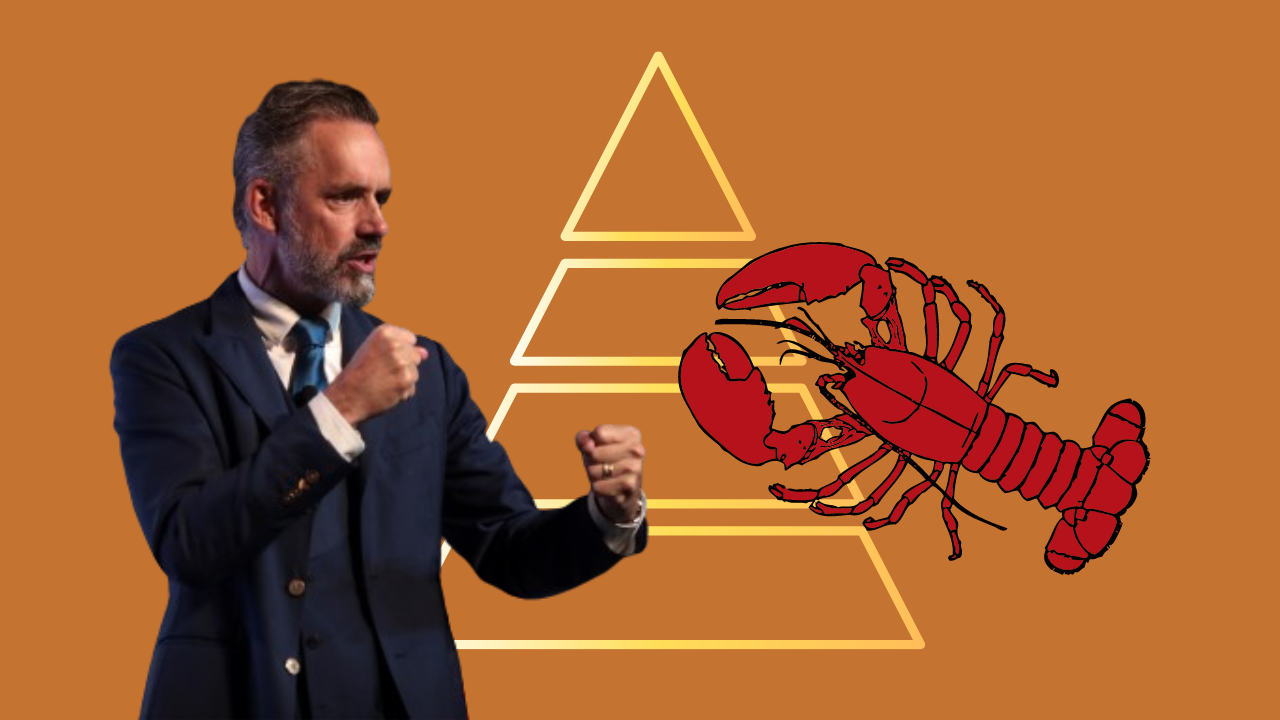In a 2018 interview with Cathy Newman, Jordan Peterson made some claims about lobsters:

He asserts, "Lobsters exist in hierarchies and they have a nervous system attuned to the hierarchy. And that nervous system runs on serotonin, just like our nervous systems do. And the nervous system of the lobster and the human being is so similar that antidepressants work on lobsters."
He also posits, "It's inevitable that there will be continuity in the way that animals and human beings organize their structures” because “we divulged [sic] from lobsters in evolutionary history about 350 million years ago."
In this interview, Peterson was promoting his 2018 book, 12 Rules For Life, wherein he makes further claims about humans and lobsters:

The underlying assertion is that humans live in dominance hierarchies.
In the context of humans, it has been suggested that a male dominance hierarchy is where men compete against one another for status to accumulate resources which can be exchanged for sex with women (Baumeister & Vohs, 2012; Baumeister, Reynolds, Winegard, & Vohs, 2017).
Peterson agrees. In the 2013 book The Psychology of Meaning, he writes, "Status is the most important determinant of survival and reproductive success” and dominance hierarchies ensure “that every consummatory attempt does not end in competitive violence."
I’m not a marine biologist but I’m sure there is a whole ocean full of examples equally as relevant as lobsters.
In fact, in the case of humans and lobsters, the living animal that probably most closely resembles the most recent common ancestor is the acoel, a relatively harmless marine worm no bigger than a grain of rice (Raz et al., 2017; Cannon et al., 2016).

The social interactions of acoel are limited to mating - they’re hermaphroditic, so each individual acts as both “male” and “female” - and they don’t engage in the complex displays of aggression seen in lobsters or form social hierarchies like primates (Bourlat & Hejnol, 2009).
If the common ancestor of humans and lobsters lacked dominance hierarchies (which seems likely, based on what we know about living animals), then our two species’ social behaviour evolved independently, and one can’t inform us about the other.
Lobsters also aren’t the only inhabitant of the ocean studied with regards to serotonin. For example, sea hares have been used extensively in serotonin studies (Aggio & Derby, 2010).
While a lobster rarely wants to see another lobster, a sea hare placed on its own will crawl toward chemical cues indicating the presence of other sea hares (Lederhendler et al., 1977). Being with other members of its species improves a sea hare’s ability to learn and remember (Schwarz et al., 1998).
Peterson rightly notes that male lobsters are aggressive because they need to fight for territory in order to access female mates and scavenge for food. But species with better predator defences and more plentiful food sources don’t need to fight.
For example, sea hares graze on algae and defend themselves by releasing ink clouds (Nusnbaum & Derby, 2010). Sea hares also engage in group mating and, being hermaphrodites, switch between "male" and "female" roles (Pennings, 1991).
So, what does this all mean?
Well, as Bailey Steinworth, a third-year Ph.D. student studying evolutionary developmental biology at the University of Florida Whitney Laboratory for Marine Bioscience, writes in a 2018 article for The Washington Post:


